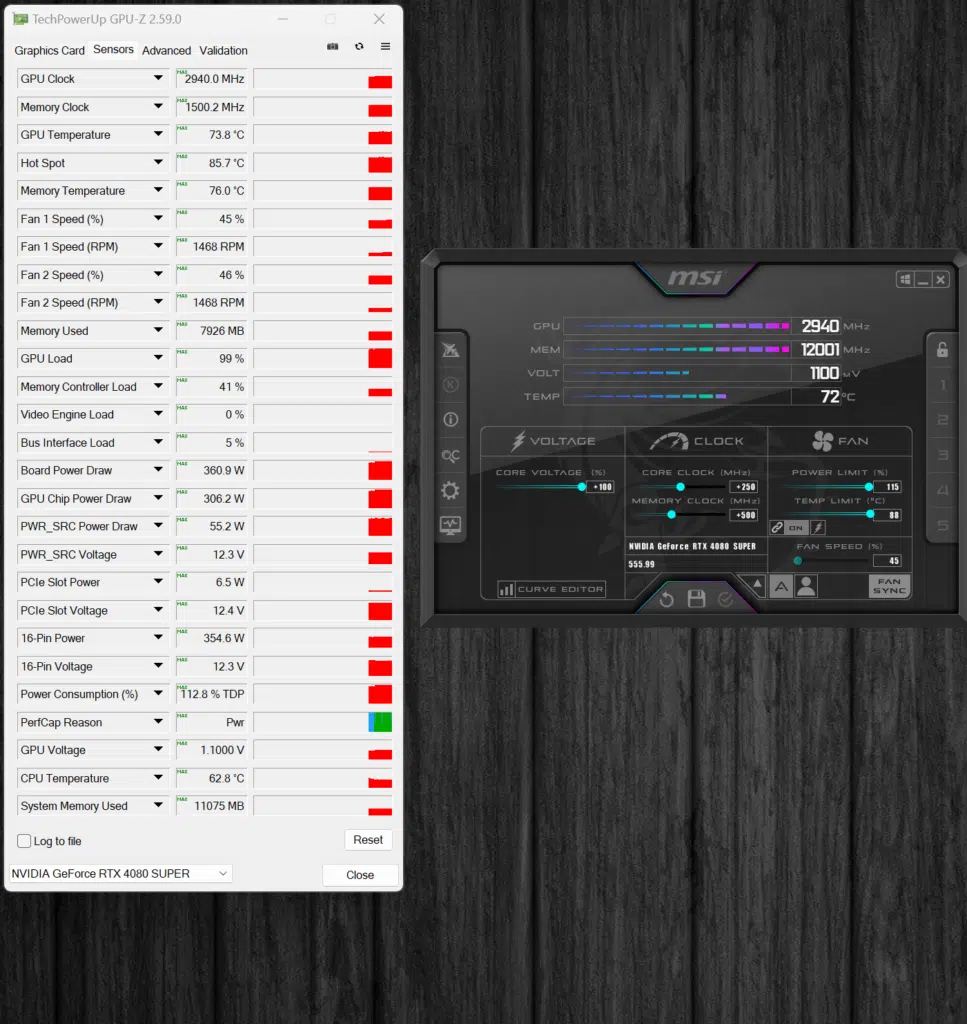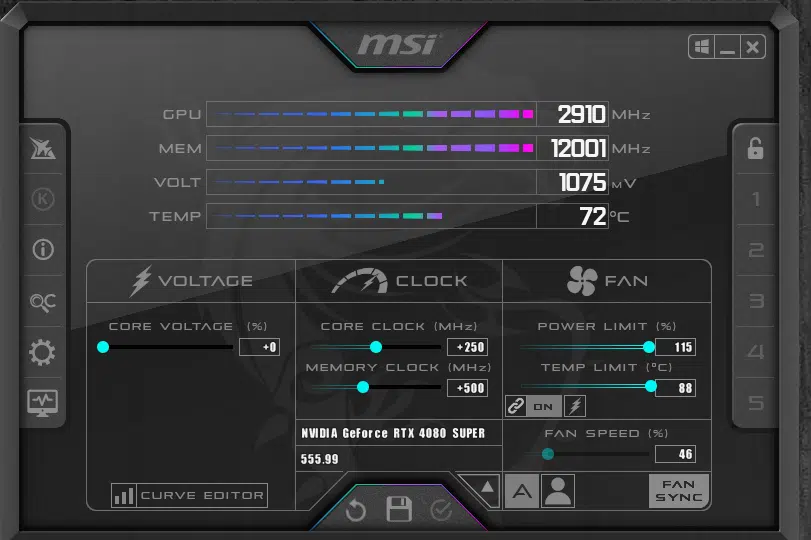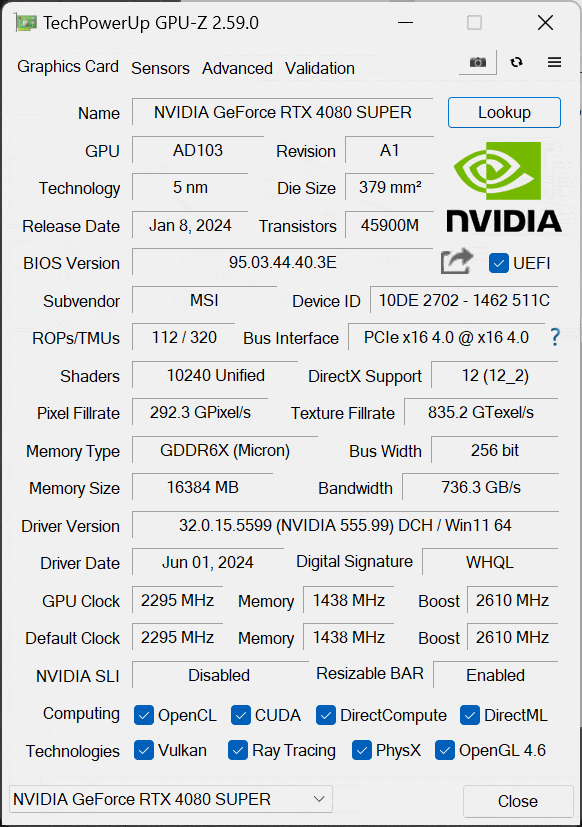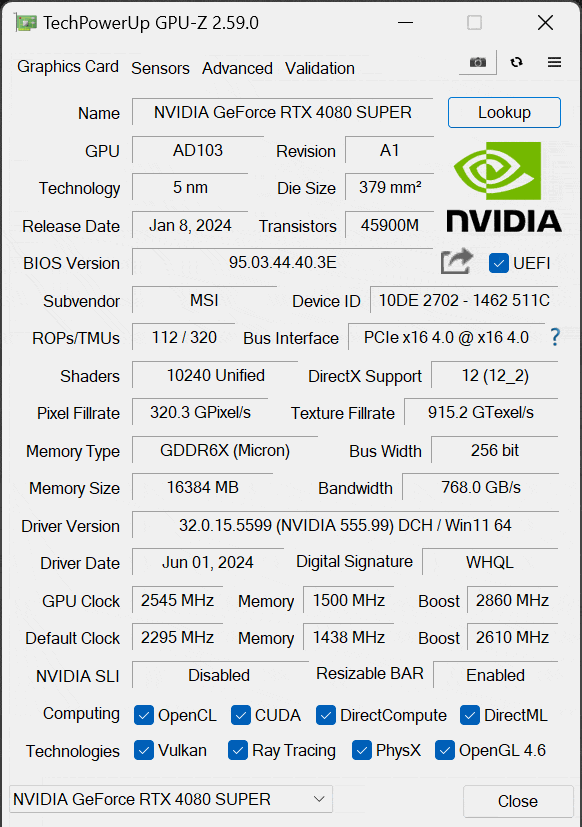Overclocking MSI GeForce RTX 4080 SUPER EXPERT
To overclock the MSI GeForce RTX 4080 SUPER EXPERT video card we used MSI’s Afterburner utility, the latest Beta release. This gave us plenty of headroom for overclocking, including the ability to increase the Voltage on this video card.
You can see below that we were able to increase the power limit by 15%, giving us good power headroom on this video card, and the sliders went far enough on GPU and memory to allow us to stretch the video card’s muscles. While we could change fan speed profiles, we opted to leave them on automatic for our testing and the temps weren’t a problem and they were not holding this video card back.
We ended up having the highest stable overclock that we settled on, without increasing Voltage. However, just to show you the maximum we could overclock the GPU without being concerned about exceeding the TDP, we will also show you an alternative overclock that works with Voltage and what frequency that allowed below.
But first, we will show the highest stable overclock without increasing Voltage, this is the overclock that kept the video card from throttling GPU frequency, thus ensuring it held its overclocked clock frequency over a long period of time while gaming.
This is a screenshot of MSI Afterburner with the highest stable overclock we achieved without increasing the Voltage. This overclock kept the TDP or board power lower, therefore ensuring that the video card maintained its overclock frequency for long periods of gaming without throttling down. With the Power Limit turned up to 115% we managed a +250 on the Core Clock and the memory at +500.
Let’s talk about the memory a little bit first, you can see what the GPU clock speed is below in the graph, but for the memory frequency, this one had a lot more room for us to play with. The default memory frequency on the MSI GeForce RTX 4080 SUPER is 23Gbps which is 1438MHz x 16. With the memory clock here above at +500 that sets the memory to 1500MHz x 16 which is 24Gbps.
However, technically we could actually overclock the memory higher than this on this video card, but there is a caveat with that. It increases the total board power and thus causes the overall overclock of the GPU frequency to throttle down over time since it exceeds the TDP quicker.
Basically, we were able to get a higher GPU frequency by keeping a more sane memory overclock. But, if you really wanted to push it on this video card on the memory side, and forgo overclocking the GPU then we managed to actually hit 1530 x16 or 24.5Gbps, and we even tested it stable at 25Gbps, though there were artifacts in a couple games with Ray Tracing. We settled on 24Gbps overclock since it was completely stable, and more safe on the power draw allowing the GPU to clock up a bit higher. At 24Gbps the new memory bandwidth is 768GB/s compared to the default of 736GB/s.
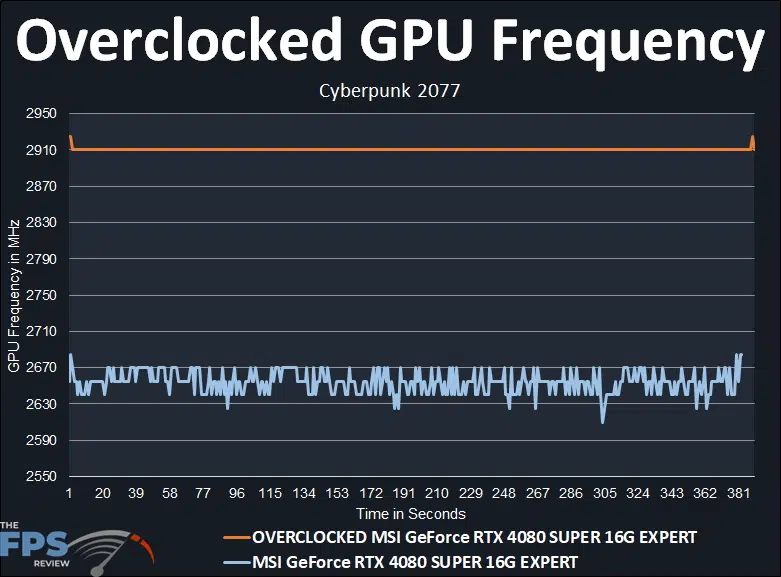
In this graph above we are showing the default GPU clock of the MSI GeForce RTX 4080 SUPER EXPERT compared to our manual overclock. Firstly, the MSI RTX 4080 SUPER EXPERT is a factory overclocked video card at 2610MHz out of the box. According to our default clock speed, this bounces between 2630MHz-2670MHz while gaming, which shows that it is exceeding the quoted factory boost clock by default thanks to GPU Boost. The average is 2654MHz, so that is the baseline by which we will compare the overlock.
In our manual overclock you saw above at +250 with the Power Limit increased (and no fan changes) the MSI GeForce RTX 4080 SUPER EXPERT ran at 2910MHz throughout our entire game run. At 2910MHz we are getting a 256MHz overclock or a 10% GPU clock speed increase with very consistent results. If we compare that to NVIDIA’s reference spec of 2550MHz, that is a 14% increase.
Now, as we mentioned, if we wanted to push the overclock with Voltage applied, well we got this result below. As you can see in the screenshot below, with Voltage increased we could hit 2940MHz maximum GPU clock frequency on the MSI GeForce RTX 4080 SUPER EXPERT. Since this is just 30MHz more, we decided to keep the Voltage at default and settle with the 2910MHz frequency which did not exceed the card’s TDP as much. The Power and Temp page will show the GPU-Z Sensors Screenshot of the MSI GeForce RTX 4080 SUPER EXPERT overclocked, so check that page for temperatures with this overclock.
